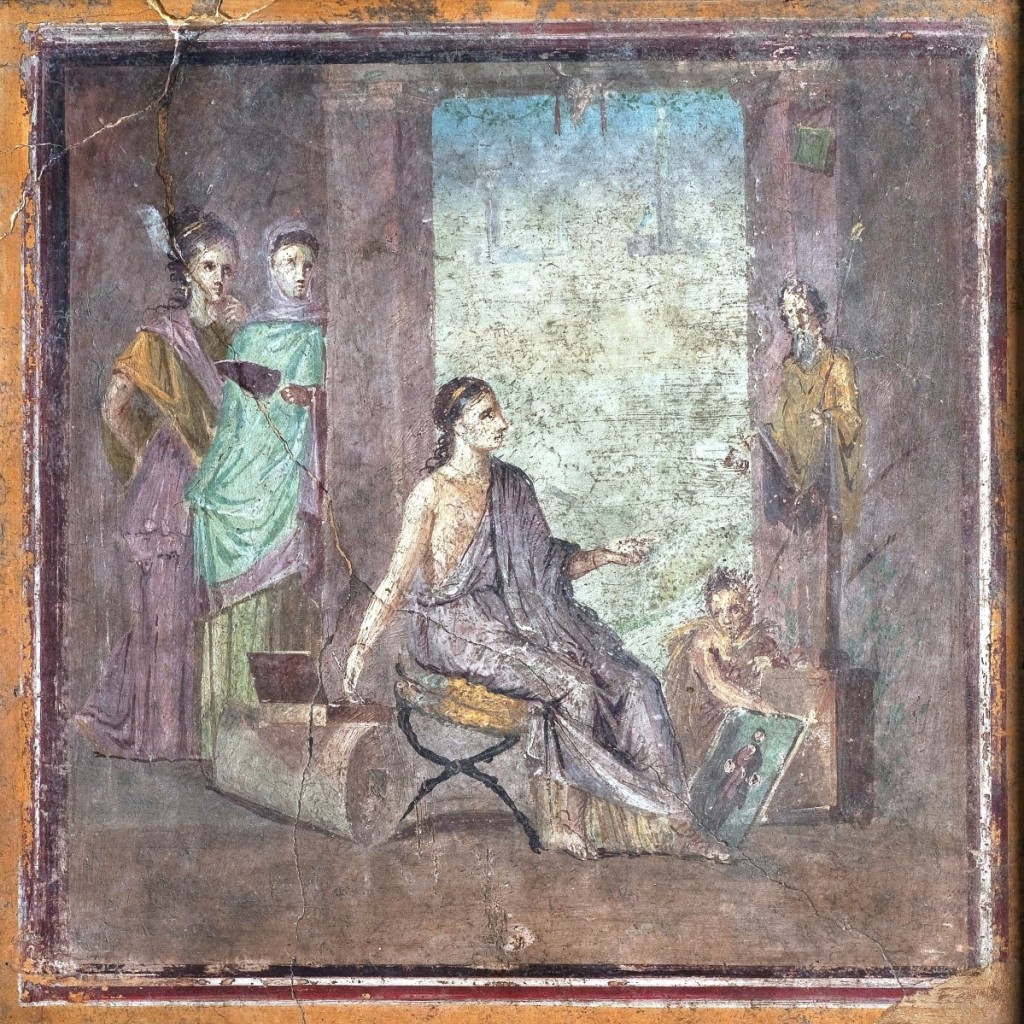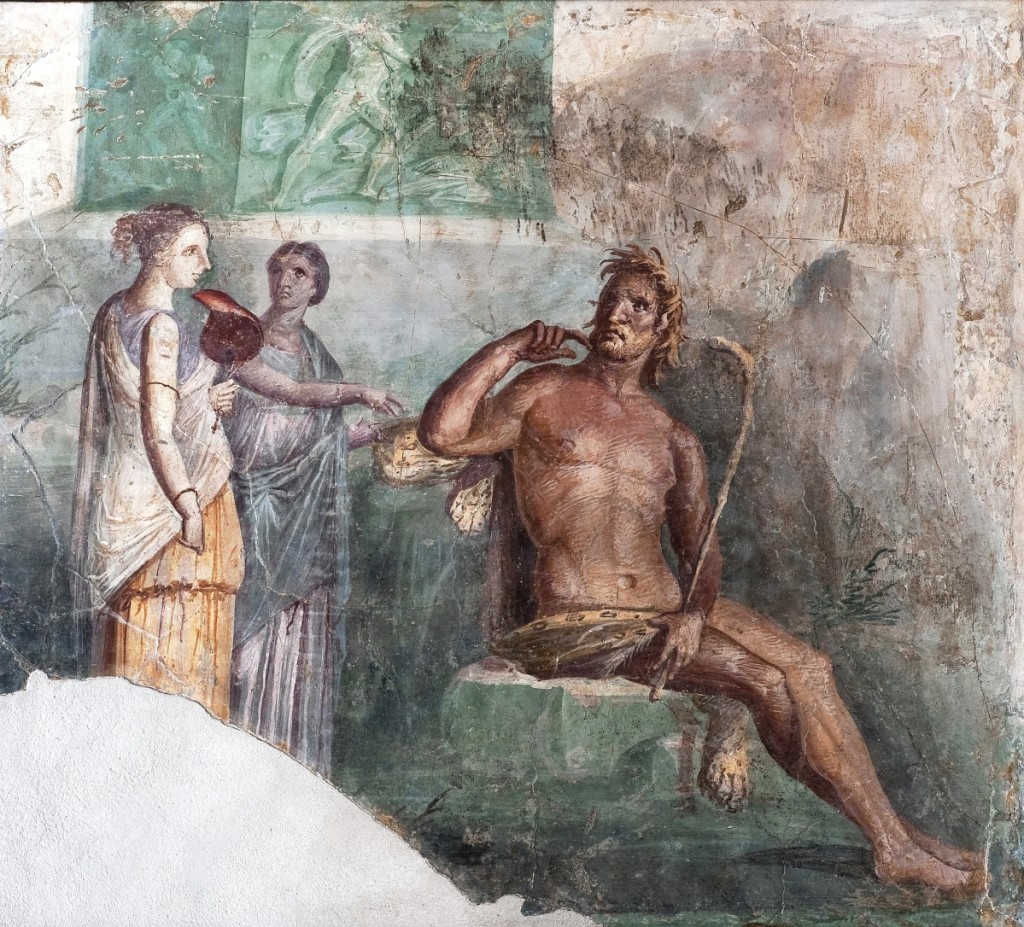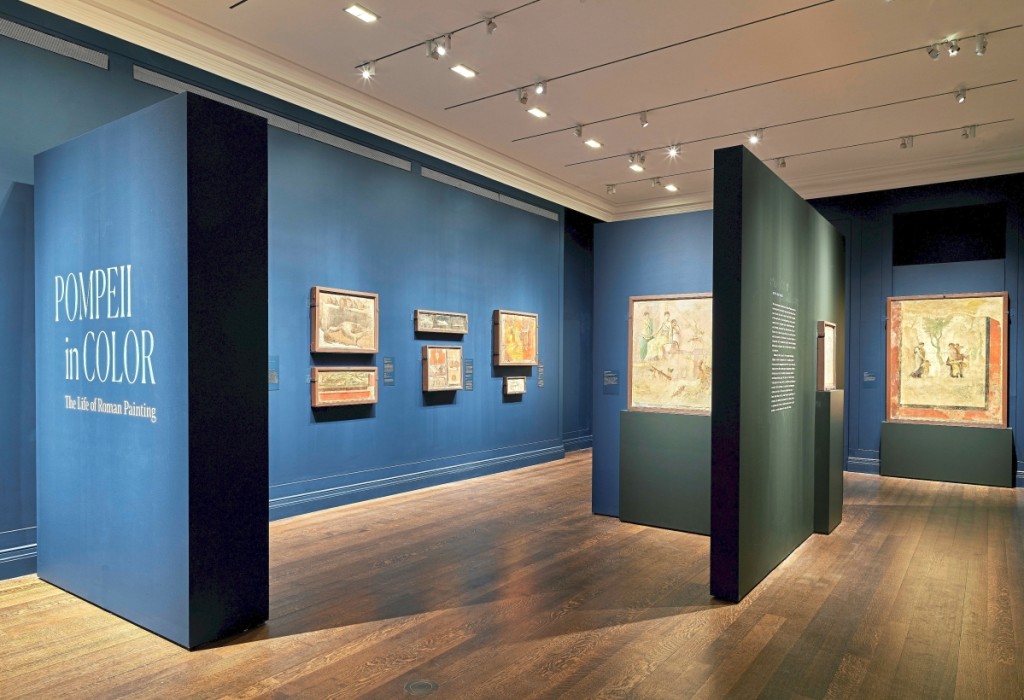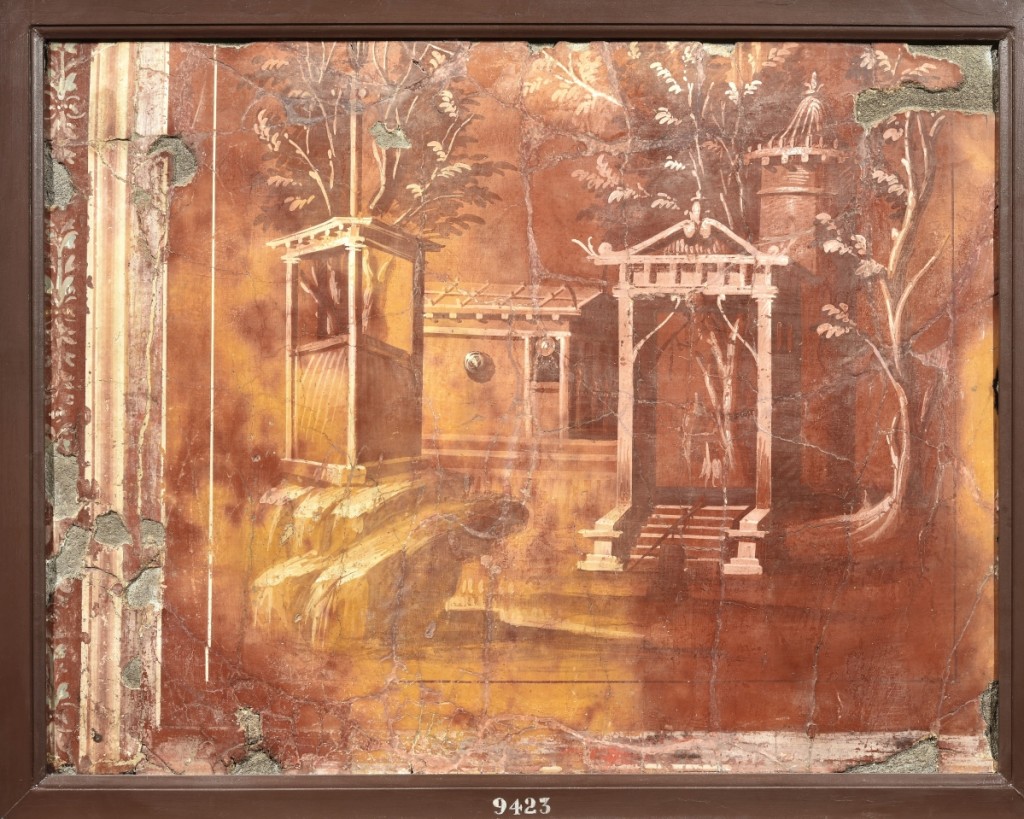
“Painter at Perform,” Dwelling of the Surgeon, Pompeii, First Century CE. Fresco. Nationwide Archaeological Museum of Naples: MANN 9018. Impression ©Photographic Archive, Nationwide Archaeological Museum of Naples.
By James D. Balestrieri
NEW YORK City – I never know if “Painter at Do the job,” the To start with Century CE fresco from the House of the Surgeon in Pompeii is the earliest impression of a girl portray, but it is the earliest I’ve seen. And, like every perform in “Pompeii in Coloration: The Everyday living of Roman Painting,” now on perspective at New York University’s Institute for the Study of the Historic Entire world, it is astonishing on a host of levels. That this work, and so a lot of other people, survived the eruption of Mount Vesuvius in 79 CE and the subsequent burial of the city of Pompeii in volcanic ash and rock is, in by itself a wonder. What is extra, it is just one of the couple of locations in archaeological background that shows us a society in a unique minute in time. Contrast this with an essay I wrote for these webpages not very long ago on Stonehenge, where the challenge for archaeology is to make sense of a sacred location that witnessed quite a few cultural modifications above hundreds of years of occupation – a condition that its much more the norm in the area – and you’ll have some feeling of the uniqueness of Pompeii.
But of the 35 or so frescoes in the exhibition, gleaned from a larger sized amount these days on see in Oklahoma City, Okla., and all component of the collection of the Nationwide Archaeological Museum of Naples, Italy, “Painter at Work” created me do a double acquire. In truth, it is a function of deliberate doubling. “Painter at Work” is a portray of a painter painting a portray – held at an angle by a boy or girl so that we can see it – a portray not of an aged person, but of a statue of an old person on a pedestal. The statue and the portray of the statue are mirrored by the pair of ladies – customers, most likely, or patrons – at suitable, peering – peeking? – from behind a pillar, watching the painter at get the job done. We enjoy the gals observing the lady paint, just as those people who resided in or frequented the Home of the Surgeon would have.
Excavations have long gone on in Pompeii considering the fact that early in the Eighteenth Century and demonstrate no signal of abating as fresh discoveries are designed every single year. The frescoes in Residence of the Surgeon, as an illustration, had been unearthed in 1771. Nevertheless the walls of the place on which “Painter at Work” was painted are, as the luxurious accompanying catalog states, in a inadequate point out of preservation, drawings manufactured in the 1770s, and subsequently revealed, offer a sense of the context of the work. In this circumstance, “Painter at Perform “was surrounded “by a complex ornamental scheme with architectural side panels richly embellished with tritons, seahorses and the figures of donors…” (cat. p. 92) On the opposite wall, a fresco of a seated gentleman, creating, although two females look on, surrounded by a related ornamental scheme is nonetheless yet another doubling, celebrating the twin arts of portray and crafting.

“Polyphemus and Galatea,” Villa at the Royal Stables on Portici, Pompeii, First Century BCE. Fresco. Nationwide Archaeological Museum of Naples: MANN 8983. Impression ©Photographic Archive, National Archaeological Museum of Naples.
Quite a few frescoes, these as people in the exhibition, were being eradicated from their walls and framed as paintings. Nowadays, archaeologists go away the operates in situ wherever achievable. Context, which is a central aim of the exhibition, prospects to more powerful hypotheses about the anonymous artists who painted the frescoes, the patrons who commissioned them, the rooms they adorned, the relationships between the illustrations or photos, and, by extension, what they may well have meant to people who lived with them, and what they could have intended to express to those who visited. Most likely those people who dwelled in the House of the Surgeon fancied them selves as newbie painters and writers, or probably they needed readers to take take note of their patronage of the arts. Or equally. “Painter at Perform,” taken out of context, is intriguing. Doubling is a figure or trope we typically associate with extra current artists and artworks – Diego Velasquez’s 1656 portray, “Las Meninas,” to title a single. In its initial context, on the other hand, as we imagine “Painter at Work” opposite the fresco of the writer at operate, the options proliferate, and the perform gets to be a social assertion as well as an artistic creation.
In conditions of doubling, an additional fascinating facet of “Pompeii in Shade: The Lifestyle of Roman Painting” is the repetition of images of well known mythological stories in different residences, painted by distinct fingers in distinctive eras. Figures in these frescoes are equivalent to a single another and are generally positioned pretty much identically in the picture airplane. This is complicated to describe in phrases, but straightforward to see when you glimpse at the two variations of “Achilles on the Island of Skyros,” one from the Home of Achilles, the other from the Household of the Dioscuri.
The tale of Achilles on the Island of Skyros is an apocryphal, Iliad-adjacent tale in which Achilles, not seeking to go to Troy, hides out at the court of King Lycomedes on the Island of Skyros. When Ulysses and Diomedes occur to fetch him, he seems, dressed as a female. When Ulysses, at any time the crafty Greek, has a soldier audio the simply call to battle on a trumpet, Achilles reflexively grabs his swords and defend and reveals his id. In the two renderings, the central grouping – Ulysses at right, grasping Achilles’s arm, Achilles put in the centre, suitable hand on the shield, searching again at Diomedes, who grabs Achilles’s right arm. In spite of losses to the House of the Dioscuri edition, there are other congruities in the track record figures, columns and architectural particulars, and in the objects on the flooring in the foreground. Both equally shields, for example, depict youthful Achilles and his teacher, Chiron the centaur.

Set up view from “Pompeii in Coloration: The Everyday living of Roman Painting,” 2022. Image ©Institute for the Review of the Historic Globe. —Andrea Brizzi photograph
All of this begs the query: how did Roman fresco painters paint, and how did they create these “copies?” 1 of the rooms in the exhibition recreates, in component, a story of painters leaving their get the job done and fleeing as the eruption of Vesuvius starts. A fragment of wall retains an artist’s drawings and a grid pink line accomplished by snapping a pigment-protected string against the wall. Recovered plumb bobs and set squares demonstrate how artists measured the area and made absolutely sure the grid squares had been identical and square. Cups of pigment, also recovered, match the cup in the hand of the “Painter at Function.” As for the visuals on their own and their curious copying, students surmise that this could have been realized in four ways, none of them mutually exceptional:
“1) from a design-ebook that captured all the specifics of a particular portray 2) from an define-e book that was like the model-book but recorded only the outlines of figures and backgrounds 3) from a determine-guide with sketches of person figures or uncomplicated teams 4) from memory.” (cat. p. 38.) It would have been comparatively quick to transfer photographs from a reserve onto a gridded wall, make changes based on the space and encompassing decorations, and then insert one’s very own type to the fresco. Even with their anonymity, this form of coordination is suggestive of groups of painters, possibly workshops or guilds. It also suggests that people today may well have visited 1 a further, favored the paintings they observed, and commissioned versions for their personal homes.
On reflection, certain operates stand out. The sulfurous yellow and purple tones glazing “Architectural Landscape” from the Villa of the Papyri, Herculaneum, flip out to be the immediate result of publicity to the sulfurous fumes of Vesuvius. At the best of the stairs, a ghostly condition is at times considered to be a man or woman with, maybe, a doggy. A 50 %-vanished abstraction, the nearly formless kind is an eerie apparition within an apparition.
Humor leavens the tragedy of the conclude of Pompeii and reveals yet another aspect of Roman daily life and considered. “Banquet Scene,” or “Symposium,” from the House of the Triclinium, Pompeii, depicts people at the beds in the triclinium, or dining place, covered in cloth as they chat, flirt, consume, serve and vomit. It is the second in the vicinity of the finish of the get together when the lousy conduct has just started. As a bonus, legible phrases in Latin, thought to have been additional right before the eruption – of the volcano, not the occasion visitor – are scratched in above the figures. The a single higher than the determine at right reads “Bibo” (“I drink”). At center, “Valetis” (“Be well”) looks to refer to our pal who has overindulged. Apart from that, “Isisa” may well properly be the name of a visitor of another person in the house. That this fresco was painted in a dining place suggests that it is a mirror of sorts, a humorous however cautionary tale against particularly this form of bash, a single that leaves a poor flavor in your mouth.

Architectural landscape, Villa of the Papyri, Herculaneum, First Century BCE. Fresco. Countrywide Archaeological Museum of Naples: MANN 9423. Image ©Photographic Archive, Countrywide Archaeological Museum of Naples.
The age-outdated art background myth holds that Roman art was comprised of debased copies of lost Greek masterworks. Greek artists did operate in Rome and did inspire Roman artists, even in Pompeii, but a speedy comparison of the will work on these webpages with illustrations or photos of Hellenistic artwork shows that in pretty much factor, Roman art went its own way. From tales, like the a single of the timorous Achilles in women’s clothes who can not resist the fight blare, to the playful notions of doubling, to painting architectural facts in trompe l’oeil vogue, to the incredibly human humor and pathos – foibles leveling gods and humans – depicted in the frescoes, Roman art signifies the Roman environment as Romans observed it.
I had the distinct pleasure of a tour of “Pompeii In Colour: The Daily life of Roman Painting” with Dr Clare P. Fitzgerald, Bernard and Lisa Selz exhibitions director and gallery curator at ISAW accompanied by my daughter, Lucia. Lucia and I have followed events at Pompeii at any time considering that we read through Getaway Less than the Volcano – 1 of the Magic Tree Household guides for young ones – in which Jack and Annie obtain on their own in the doomed city just days before the eruption. Like Jack and Annie, Lucia and I urge you to operate, operate as if a river of lava were being chasing you, to see “Pompeii In Shade: The Daily life of Roman Portray.” ISAW is a stone’s throw from the Metropolitan Museum of Artwork. You won’t regret the brief detour or the further time it will take to see this as soon as-in-a lifetime exhibition.
“Pompeii in Coloration: The Life of Roman Painting” will be on see as a result of May possibly 29 at the Institute for the Analyze of the Historic Planet at New York University, at 15 East 84th Street. For facts, 212-992-7800 or www.isaw.nyu.edu/exhibitions/pompeii-in-colour.
